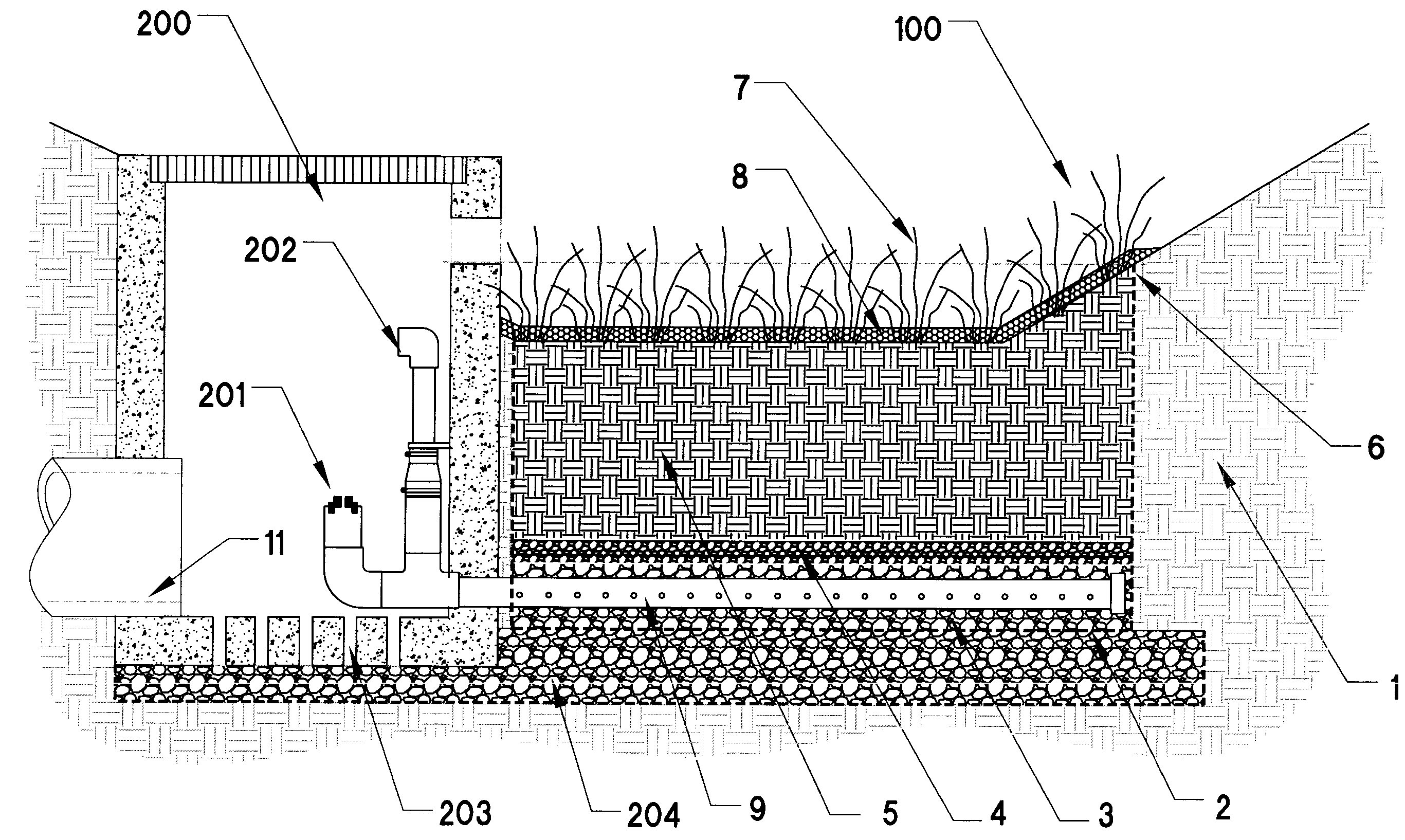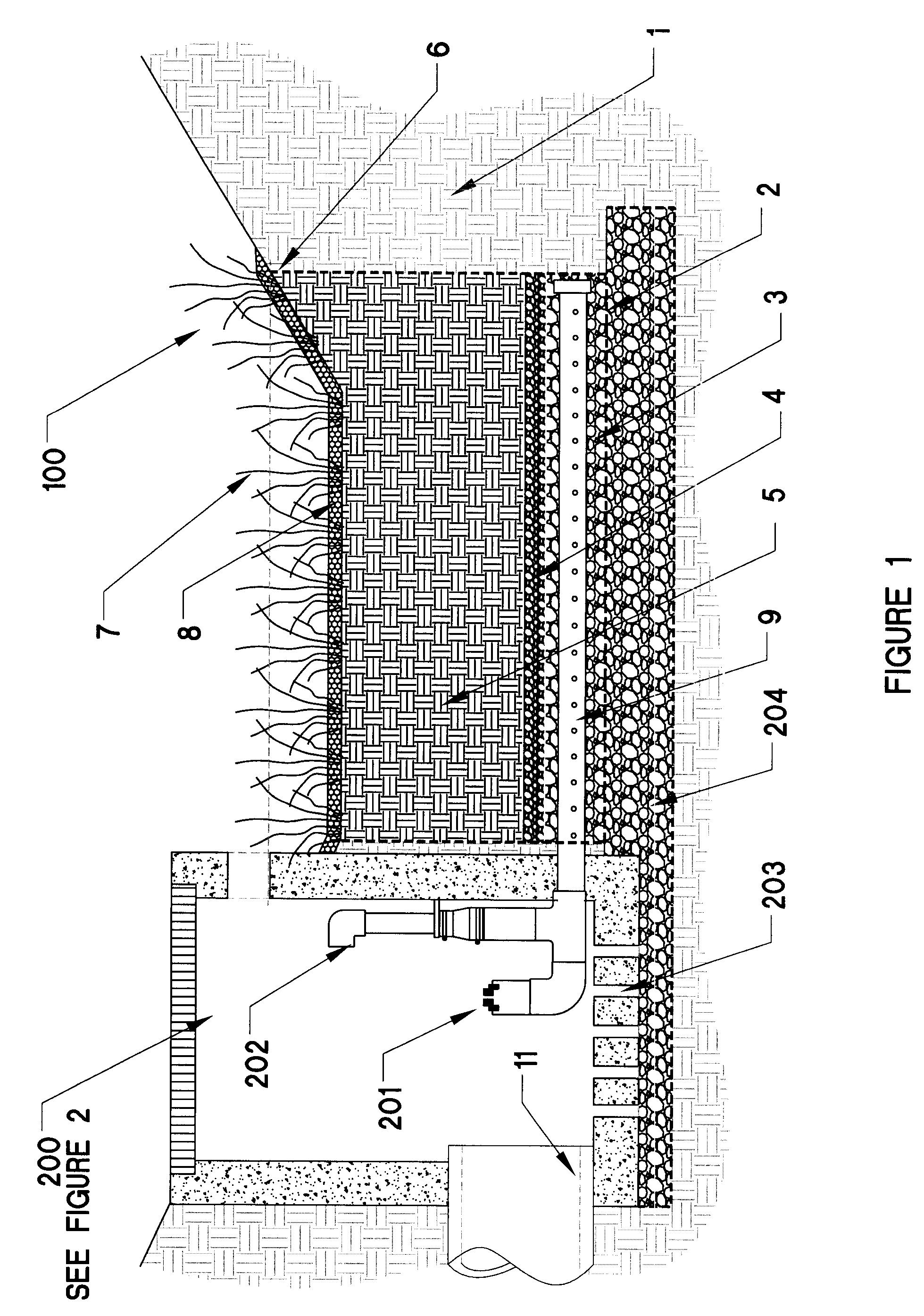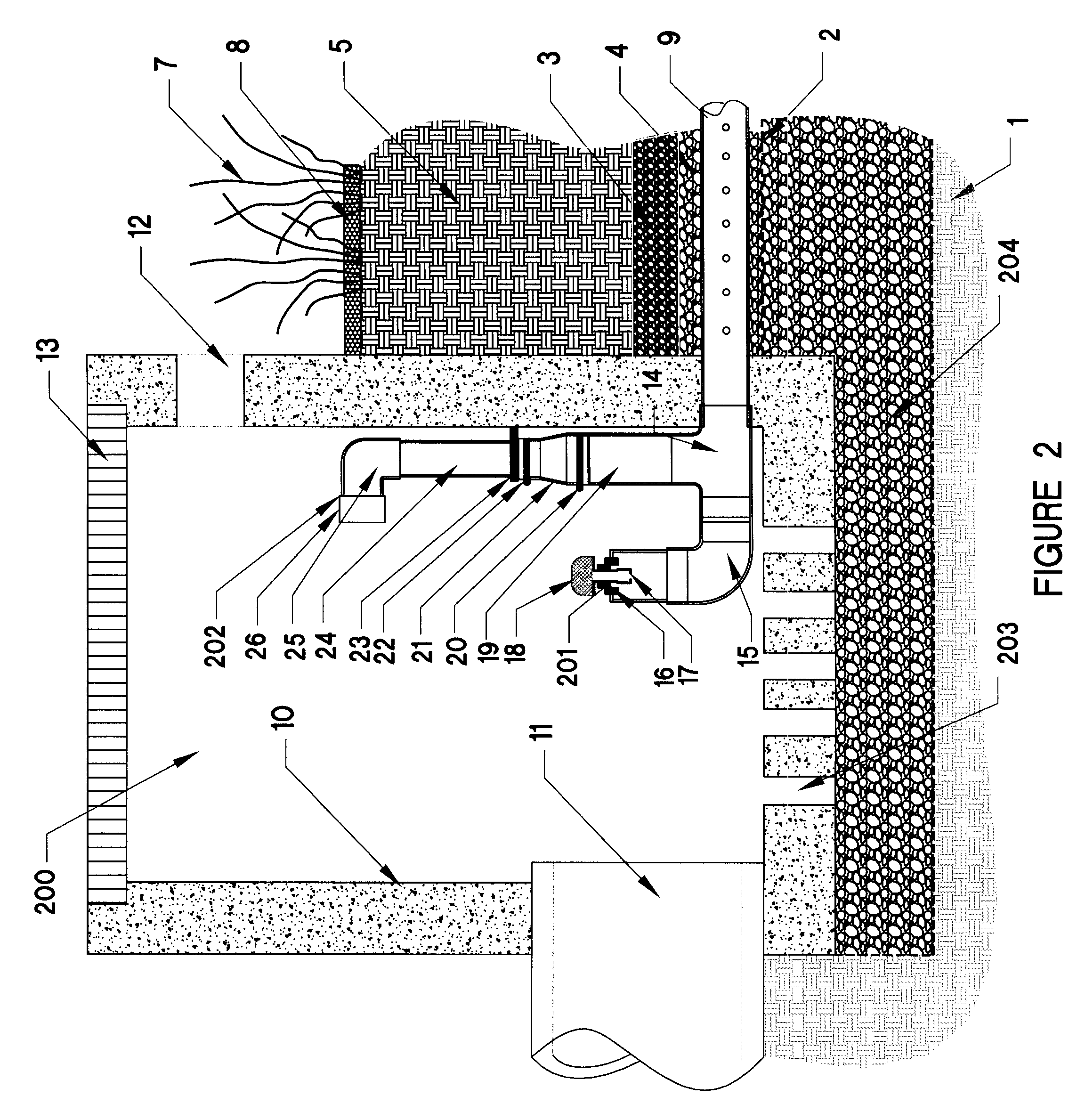Bioretention system and method
a bioretention system and bioretention technology, applied in water cleaning, filtration separation, separation processes, etc., can solve the problems of less effective dissolved nitrogen and long-term dissolved phosphorus removal of dissolved nitrogen in typical bioretention systems with sandy media and free discharge outlets, and achieve the effect of preventing surface erosion and improving filtration properties
- Summary
- Abstract
- Description
- Claims
- Application Information
AI Technical Summary
Benefits of technology
Problems solved by technology
Method used
Image
Examples
Embodiment Construction
[0020]The invention is directed to a bioretention system and method for removing phosphorus, nitrogen and other contaminants from fluid effluent, such as wastewater and stormwater streams. The system and method can include layers of filtration media. Some of the media can have a coarse-textured matrix of preferably well graded sand with a low uniformity coefficient. This can be layered or blended with organic material resistant to decomposition, such as peat moss and / or a fine fraction of clay-like material amendment, such as one having a high phosphorous sorption capacity. The coarse matrix fraction can vary from about 50 to 80% by volume. The organic material can vary from about 10 to 20% by volume. The fine fraction amendment can vary from about 10% to 40% by volume.
[0021]The coarse fraction component can include materials crushed to sand particle gradation, preferably U.S. Golf Association (USGA) root zone gradation of which at least 60% is between a diameter of 1 / 25 inch and 1 / ...
PUM
| Property | Measurement | Unit |
|---|---|---|
| thick | aaaaa | aaaaa |
| volume | aaaaa | aaaaa |
| area | aaaaa | aaaaa |
Abstract
Description
Claims
Application Information
 Login to View More
Login to View More - R&D
- Intellectual Property
- Life Sciences
- Materials
- Tech Scout
- Unparalleled Data Quality
- Higher Quality Content
- 60% Fewer Hallucinations
Browse by: Latest US Patents, China's latest patents, Technical Efficacy Thesaurus, Application Domain, Technology Topic, Popular Technical Reports.
© 2025 PatSnap. All rights reserved.Legal|Privacy policy|Modern Slavery Act Transparency Statement|Sitemap|About US| Contact US: help@patsnap.com



